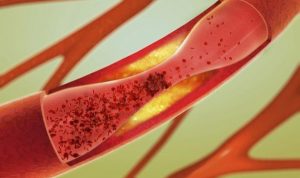
A long non-coding RNA target that regulates the proliferation of vascular smooth muscle cells, is present in the plasma of cardiovascular disease patients, and found at increased levels in unstable regions of atherosclerotic plaques. Therapeutic targeting of this molecule could be a means to inhibit vascular remodelling and reduce or prevent vascular diseases.
Application
Development Status
Commercial Offerings
Opportunity
Vascular remodelling is a key pathological process in cardiovascular diseases, such as atherosclerosis, plaque rupture and neointimal hyperplasia. For example, in coronary bypass surgery venous tissue taken from the patient’s leg is used to bypass the blocked region. Over time these grafts can narrow and eventually fail as smooth muscle cells in the graft over-proliferate. It affects around 30-50% of patients within ten years of surgery resulting in a need for further treatment, and significant additional costs to healthcare providers. Currently there are no approaches to inhibit this pathological remodelling process.
Technology
Edinburgh researchers have identified and characterised a long non-coding RNA, called SMILR, which is up-regulated in vascular smooth muscle cells and plays a key role in regulating their proliferation. This up-regulation is cell type specific and not seen at the same level in endothelial cells suggesting that it may be possible to target smooth muscle cell function via SMILR without having detrimental effects on endothelial cell mediated repair mechanisms. Modulation of SMILR could be targeted and specific means to significantly improve current anti-proliferative therapies.
In vitro proof of concept data from primary vascular cells shows enhanced expression of SMILR in response to pro-inflammatory factors known to play a role in vascular disease. In human tissue samples, higher levels of SMILR are detected in unstable plaques compared to patient-matched stable lesions, suggesting a role atherosclerotic lesion progression. In human plasma, increased levels of SMILR are found in patients with enhanced inflammation known to be susceptible to atherosclerosis.
Benefits
Smooth Muscle Enriched Long Non-Coding RNA (SMILR) Regulates Cell Proliferation. Ballantyne MD et al, Circulation 2016, Apr 6
Please note, the header image is purely illustrative. Source: Christoph Burgstedt via Shutterstock
Quote: TEC1103920

Technology Transfer Manager
College of Medicine and Veterinary Medicine